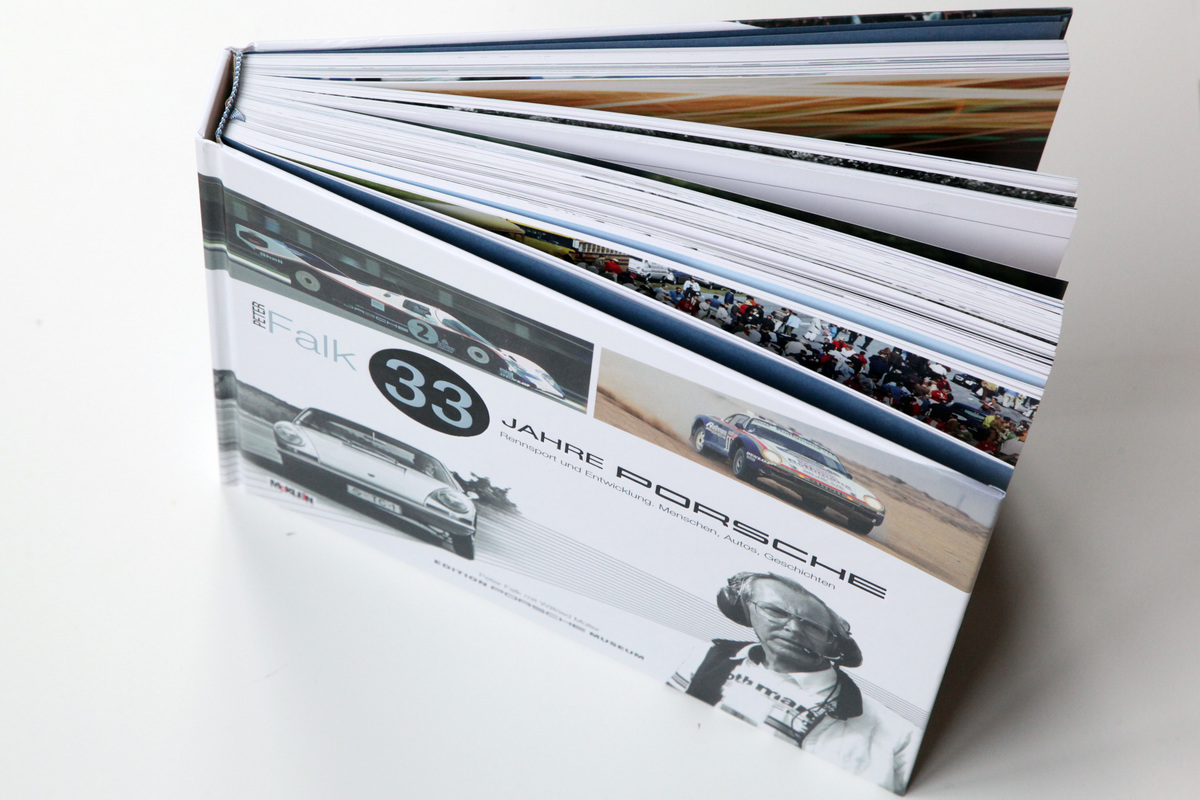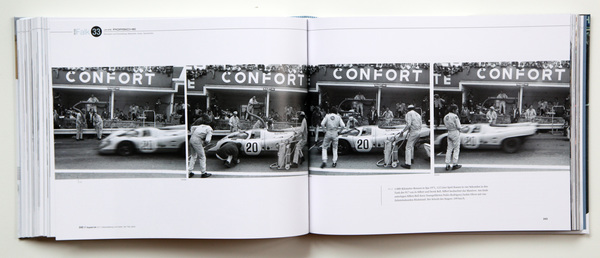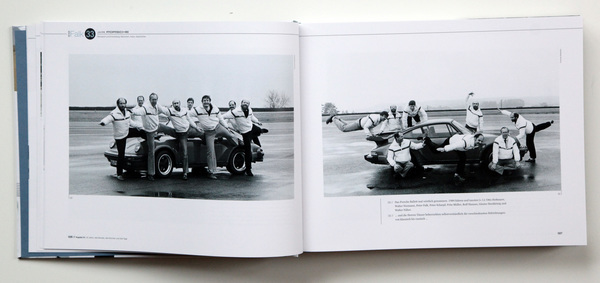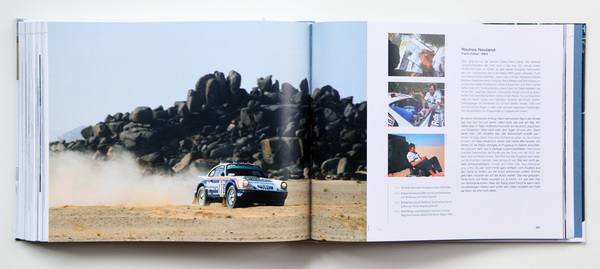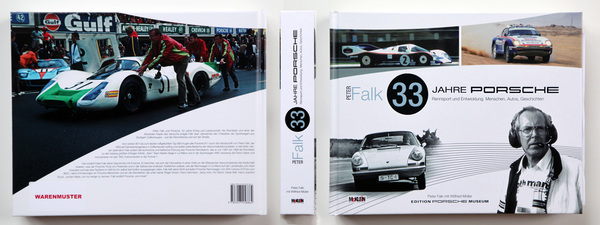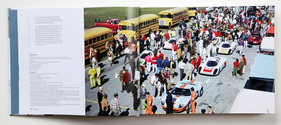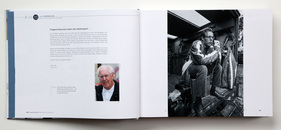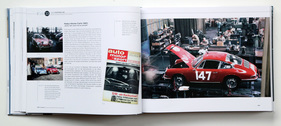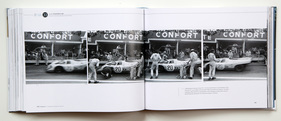Peter Falk was born in Athens on November 27, 1932. He went to school in Schörnberg and graduated from the Humanist Gymnasium in nearby Pforzheim in 1952. He decided to do an apprenticeship as a car mechanic at Daimler-Benz before going to university, which he completed early. He then studied mechanical engineering at the Technical University of Stuttgart.

Straight to Porsche after his studies
After completing his studies, Peter Falk applied to Porsche in 1959 as an engineer in the testing department. In his letter of application, he justified his qualification with his previous racing activities and his investigations into the suspension and shock absorbers on the NSU Prinz as part of his diploma thesis.

He got the job. From 1964, he was Head of Preliminary and Racing Vehicle Development, from 1970 Head of Road Testing, from 1973 Head of Testing, and from 1982 Head of Sport and Head of Racing Development. He held all of these positions under Helmut Bott, who had worked his way up to the position of Head of Research and Development by 1979. After Bott's retirement and under the new Head of Development, Ulrich Bez, the racing department was reduced in 1989 under strong economic pressure and Peter Falk returned to series development as Head of Chassis Development. He retained this position until his retirement in 1993, 33 years after joining the company and the road test department.
Now the Porsche Museum Edition has dedicated a book to him.
Made to "chatter"
"He doesn't talk at all," his wife remarked after meeting him for the first time in the early 1960s. He is also, by his own admission, not a storyteller. The "biography" project therefore only gained momentum when he was joined by Wilfried Müller. He had already helped Walter Röhrl to put his memories into book form. His brilliant book "Details - Legendäre Sportwagen ganz nah: 1965-1969" from 2015 (ISBN: 978-3-927458-76-5) also deserves a special mention.
In brick format
The result is a book in the proven Edition Porsche Museum brick format with dimensions of 305x245x40 mm. It has just under 400 pages and around 550 illustrations. Peter Falk contributed quite a few of the photos himself and it is precisely these that make the book so special!

At the end, he summarizes his greatest successes, in which he was able to participate in a responsible position in racing, as follows: The Dakar, the first Le Mans victory with the 917 in 1970 and the triple victory at Le Mans in 1982 with the 956 (p. 372). Consequently, the 24 Hours of Le Mans and the Paris-Dakar Rally each have their own chapter.
In total, the book is divided into six chapters:
- 33 years, three months, three weeks and three days
- Fixed star in the motorsport sky: Le Mans
- World champions from the garage corner: the 60s
- 917, Interpreteering and Safari, the 70s
- Porsche's greatest motorsport era: the 80s
- Paris-Dakar Rally: heartbreakingly heartwarming
- Appendix: From Peter Falk's private archive
It follows the three strands of Peter Falk's automotive life: the racing driver, the test driver and developer, and the race director.
A heart for racing
Falk was already active in racing before he started at Porsche. He raced on his motorcycle and became a sought-after navigator for rallies. In the 1950s, he drove the Deutschland Rally, Liège-Brescia-Liège, Liège-Sofia-Liège and the Monte-Carlo Rally, among others. In 1960, Walfried Winkler/Peter Falk came fourth overall and won their class in the Tour d'Europe in a Porsche 356B supported by the factory, with Falk driving large parts of the route. In 1965, Herbert Linge/Peter Falk drove the Porsche 911 2.0 entered by the factory to 5th place overall in the Monte Carlo Rally. It was the race launch of the 911.

With the 911 right from the start
One constant in his work at Porsche was the development of the air-cooled 911. Falk drove it as early as the 901 (1963) and was later involved in the development of the 911 Carrera RS 2.7 (1972), the 911 Turbo (1973) and the 993 model with double wishbone rear axle (1990). He was also significantly involved in the 914 and 928 transaxle models and other series and customer projects.
Le Mans series participant
Peter Falk was a member of the Porsche team at the 24 Hours of Le Mans for the first time in 1964. His job: timekeeper. By 1992, he had taken part in the race 29 times in various roles. He takes credit for the 1977 victory of Jacky Ickx/Hurley Haywood/Jürgen Barth on 5 cylinders, as he decided to let the wounded Porsche 936 drive two more laps with Barth at the wheel at the end. During his time as race director, the Porsche 956 and 962 won the race, which he described as the greatest, every time from 1982-1987. In 1982, the works cars used in the race finished in the top three places.
The Paris-Dakar challenge
In 1983, Jacky Ickx asked Porsche whether it was interested in taking part in the Paris-Dakar Rally. Bott commissioned Peter Falk and Roland Kussmaul to drive the Type 953 (911 Carrera 3.2 4x4). They were given Bott's company car in return. René Metge/Dominique Lemoyne won sensationally at the first attempt. Jacky Ickx/Claude Brasseur finished sixth and Roland Kussmaul/Erich Lerner 26th overall. All the 911s entered crossed the finish line.

The disillusionment came in 1985: total failure. Falk did not want to let Porsche get away with this and pushed for revenge. Metge/Lemoyne and Ickx/Brasseur achieved a double victory with the 959 in 1986.
Peter Falk was on site in all of these races and managed the team. He later cited the long duration, the conditions, the stress, the fatigue, physical weaknesses as a result of diarrhea and colds as the major challenges for each individual team member.
Part of the sports prototype development
Between these two sporting cornerstones are the three chapters on "day-to-day business", divided into the three decades of his career: the 1960s, 1970s and 1980s. From the 904 GTS to the TAG-Turbo and 2708 CART racing cars, Peter Falk was right at the forefront.
He was particularly present when Ferdinand Piëch ignited a new era with the Carrera 6 and overall victories in the major sports car races were targeted.
He was also involved in the mise-au-point of the 917. Especially on October 14-17, 1969 in Zeltweg, when the test drivers reported for the first time that it drove like a racing car. John Horsman patted himself on the back in his biography "Racing in the Rain" (2006, EAN: 978-1-893618-71-8, pp. 194-202) and spoke of Horsman-tail. In Falk's reading, it sounds different: "It wasn't Wyer who did it, it wasn't Porsche who did it. We [John Horsman, Helmut Flegl, Peter Falk] had the idea of why the car didn't work in the same second" (p. 228). Ferdinand Piëch contributed two pages to the book, where he states that it was clear from these tests that the 917 was not a faulty design. But it was necessary to abandon his goal of achieving the lowest possible aerodynamic peak value [cw value] in favor of more downforce (p. 248). Walter Näher provides a detailed account of these tests, including the change to the front end and the tire tests, in his book on the 917 (2009, ISBN 978-3-7688-2651-8, pp. 216-222).
And Falk was race director when Porsche dominated endurance racing in the 1980s with the 956 and 962.
Insider stories
He talks about endurance races, hill climbs, rallies including the Safari Rally, Can-Am, CART, the Targa Florio, Daytona, Sebring, Nürburgring, Siffert, Herrmann, Mitter, Stommelen, Ickx, Barth, Stuck, Haywood, Bell, Bott, Piëch, Fuhrmann, Ferry Porsche, etc., etc., etc. He was also present at the world record set by Siffert, Spörry, Steinemann and Vögele in Monza in 1967.

It is Porsche racing history from the inside. He was an insider and talks from the inside. He does not shy away from mentioning the respective opinions and names. What's more, Peter Falk drove the early cars himself, because the racing cars were also prepared for use in road tests. Until July 25, 1969, when a deer ran in front of his car at high speed in the 908/02 on the Hockenheimring. Despite suffering a total loss, he got off lightly and Piëch banned him from driving racing sports cars.
Despite all the responsibility imposed on him, Peter Falk was always a team player. You notice this when he tells the stories from the North Cape, the desert, Teloché, the USA, Turrach or the Wolfsburg weekends. His leadership principle: hard work and a great party afterwards. A must for everyone!
Archive and reading book
The documents from his private archive show a very thoughtful, systematic technician. The short vocabulary for mechanics or his instructions for a long-distance race prove that he was able to put his experiences into clear words. The basis was constant measurement. There are also examples of this in the appendix: the performance comparison of the Porsche 911 and his driver analysis.
Despite its size, the book is an excellent read. The layout is pleasant and the text is well written. It is divided into relatively short sections, each dealing with one episode. This makes it easy to portion out the material. This is also necessary, as it is a dense package of information. It is therefore a pity that an index has been omitted, which would have allowed the reader to conduct a targeted search. Sometimes you get the feeling that only real insiders can grasp the content in all its depth.

On the other hand, you get an almost sensational collection of pictures, which alone is worth buying the book.
For Porsche fans, but not only
After Hans Mezger (2011, ISBN 978-1-906712-08-2) and Norbert Singer (2006, ISBN 978-1-902351-30-8), Peter Falk has now also published his memoirs: Engine Development, Chassis Development and Testing. As the periods overlap, it is tempting to compare them. But the 800 pages that would have to be worked through (albeit with lots of pictures) are more of a deterrent.
The book is primarily intended for fans of the Porsche brand. However, it is also an important contribution to the history of Group C in the 1980s. Peter Falk addresses it very carefully using the example of Huschke von Hanstein: the period from the mid-1960s onwards was also characterized by a professionalization that placed new demands on people and structures. It is a multi-layered book.

Bibliographical information
- Title: Peter Falk - 33 years of Porsche racing and development - people, cars, stories
- Authors: Peter Falk, Wilfried Müller
- Language: German or English
- Publisher: McKlein Publishing
- Edition: 1st edition 2016
- Format: Hardcover, 305x245mm,
- Size: 407 pages, approx. 345 photos and graphics in color and 196 in black and white
- ISBN number: 978-3-927458-87-1
- Price: EUR 69.90 (excluding postage/packaging)
- Order/purchase: Online at McKlein Publishing, online at amazon.de or at the relevant bookstore
